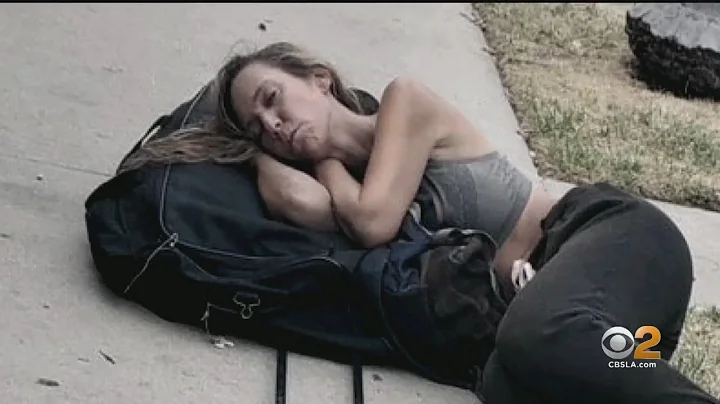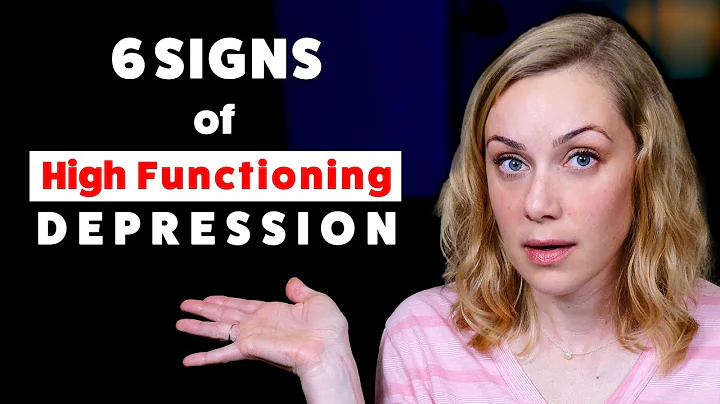Modern Psychiatry Although and psychology have only a history of more than 100 years, they have had a significant impact on human thought and involve various fields of human spiritual life. The movie is no exception. This artistic style, which was born almost at the same time as modern psychiatry and psychology, has the same profound impact on human life. The art of film and mental illness are not unrelated, but have been in the shadows from the beginning.

The development of film technology is a big topic, and here is a small angle. To discuss mental illness in film art, we must first understand what mental illness is. Mental illness is a general term for many different kinds of psychological, emotional and behavioral abnormalities in humans. It includes relatively mild psychological disorders, personality disorders, neurosis, etc. and more severe schizophrenia, depression, Mania and so on.
The symptoms of mental illness are mainly manifested as obstacles in perception, thinking, emotion, will and behavior. For hundreds of years, mental patients have been subject to suspicion, fear, discrimination, rejection, and abandonment to varying degrees. People treat mental illnesses differently from other diseases. If someone suffers from high blood pressure or diabetes, most of what they get is the sympathy of the people around them. Mental illness is different. It is often regarded as personal. Shortcomings and bad luck have become blemishes in the individual's social life.

Psychiatry and the development of mental health movement are gradually changing this situation.Psychiatry is a branch of medicine that studies the diagnosis and treatment of abnormal human behavior. Therefore, it is an applied science and is called psychiatry in hospitals. The psychiatrists who work in psychiatry are psychiatrists or psychiatrists. They are professionals who have received medical education and psychology training. Therefore, they treat abnormal human behaviors from a medical perspective and treat them as diseases rather than weaknesses. , Fault, ideological and moral problems, crime, or something else. In recent years, clinical psychologists, psychiatric nurses and social workers have also joined the medical practice of psychiatry.
There are various explanations for abnormal human behaviors. Sociologists believe that social environmental experience is the determinant of mental illness; the psychological view is that abnormal behaviors are caused by conflicts and struggles within the personality or acquired For example, Freud believes that mental illness involves people’s psychological motivations. Normal and abnormal behaviors are the result of conflicts between consciousness and unconscious , desire drive or instinct; the medical model believes that spiritual Diseases are the result of genetics, injuries, biochemical defects or other physical causes. Therefore, mental illness is a biological disease. Patients need to be hospitalized, take medication, and use medical interventions like the treatment of physical diseases. The medical model has effectively controlled serious mental illnesses like schizophrenia and depression due to the provision of drug treatments, greatly changed the situation and image of mental patients, and improved the professional status of psychiatry as the main branch of medicine. .
Psychiatry has a long history and is almost as old as medicine. Ancient Chinese medicine and ancient Greek medicine attach great importance to human mental and emotional phenomena. In 1798, the French psychiatrist Binel, who worked at the Bissette Hospital in Paris, abolished the management system for shackling mental patients for the first time, and promoted the concept of mental illness, which became a sign of the birth of modern psychiatry. Psychiatry developed into a self-contained discipline in the medical field in the early 19th century. At the end of the 19th century, two German-speaking clinicians pushed the development of modern psychiatry to a new stage, greatly improving the level of psychiatry. Scientificity and status in human life, they are Emil. Clay Pilin and Sigmund. Freud.

Krepilin’s work shows people thatPsychiatry, like other branches of medicine, is based on rigorous and precise investigation and research, and Freud's epoch-making revelation of the subconscious has pointed out the direction for the classification and treatment of neurosis. Freud's subconscious concept and dream interpretation not only promoted the development of psychiatry and medicine, but also had a profound influence in the fields of anthropology, sociology and art.
Psychiatry and psychology are different. psychology not only studies abnormal behaviors, but mainly discusses normal behaviors. It not only studies human behavior, but also studies animal behavior . wide. Psychology is one of the basic disciplines of psychiatry. Psychology has played a considerable role in promoting the development of psychiatry. Psychology first introduced mathematical statistical methods, and later learned from psychiatry to improve its science. .
As a comprehensive art reflecting the activities of human survival, film has not been separated from the trajectory of psychiatry and psychology since its birth. In the 1880s and 90s, the modern framework of psychiatry and psychology gradually took shape, and the film was also in the primitive gestation and budding stage. In this period, Wundt and Stanley. Hall established psychology laboratories in Leipzig, Germany, and Clark University in the United States. Witmer established the earliest psychology clinics in and University of Pennsylvania. Krepilin established the status of psychiatry as a branch of medicine. , And separated from neurology.

One of the founders of Kodak, George. Eastman improved the continuous film, Edison and Charles. Jenkins in the United States, Burt. Akeles and Robert. Paul trial-produced original motion picture projectors in the UK, Maybridge and William. Dixon, Leland. Stanford and Masha and others filmed the earliest event transparencies. In 1895, the French Lumière brothers screened the film for the first time in Paris, and the film has since been on the stage of history. In the same year, Freud and Breuer jointly published "Research on Hysteria" in Vienna, using psychoanalysis for the first time. The word became a milestone in the development of psychiatry and psychology. In the next one hundred years, film art and psychiatry have each experienced a process from germination to maturity and growth, and have gradually become an indispensable part of human material and spiritual life.

Hollywood’s heyday in the 1930s and 1940s, film and psychiatry and psychology forged an indissoluble bond, especially Freud’s psychodynamics, which was in the United States at the time Flourish. At the beginning of this century, the emerging American culture has embraced all aspects of new things. Film art that originated in Europe has found a foothold for commercial development in the United States. With Hollywood as the center, it has brought together talents and genres from all walks of life. Grow into an independent emerging industry. Freud's early doctrine was criticized and rejected everywhere in Europe, and only the United States became interested in it.
Psychoanalysis found a market in this fertile soil, which has a huge impact on the public and film creators. In their eyes, psychiatrists are psychoanalysts, and psychiatric treatment is Psychoanalysis, with the passage of time, Freud's thoughts have been assimilated into American culture and become part of the rational life of Americans.
this period, Psychiatry and the film industry have welcomed a large number of immigrants from Europe, such as psychoanalysts Brill, Horney, Fromm , Eriksson , etc., to portray abnormal psychology Well-known directors Hitchcock, Litvak, Flihan. Lang, a pioneer in the study of the relationship between psychology and film, and film theorist Krakauer, and Laszlo, who originally worked as a director at University of Vienna after specializing in psychiatry. Benedic , their careers are just at the peak, they are creative, and they have brought a lot of new things. Their experience and tradition have brought new looks and profound influences to their respective professional fields.
The penetration of psychiatry into the film industry is based on the understanding of the public on the one hand, and it is also the need for the development of film itself. The theme of film and television culture is nothing more than the physical basis and psychological motives of people: violence, crime, sex, greed for money, and the reasons hidden under these phenomena need to be discovered. The important role of psychopath or mental illness cannot be ignored. Soon after the advent of sound films, the new name of psychological films was added to the long list of feature films, comedies, action films, crime films, violent films, and so on. The characteristics and nature of mental illness have greatly stimulated the imagination of the filmmakers, opened the door to the increasingly exhausted sources of themes, and injected fresh blood into the dying melodrama. Movies also need mental illness as a plot tool and background color to promote the audience's re-understanding of human behavior and add rich, interesting and unusual brilliance to the screen.

It is obvious to all that a large number of excellent films based on psychiatry and psychology have reproduced the past glory of Hollywood cinema. Especially in recent years, the performance of human abnormal behavior has become an upsurge in the international film world.Attracting a large amount of investment and audiences, these films continue to break box office records, have won awards and awards, and have become the focus of attention of various media and critics. Among them, the recent works that Chinese audiences are more familiar with include "Rain Man" and "The Silent Lamb" , "Instinct", "Forrest Gump" and so on. These films have become classic works in the world's movie treasure house, and are a precious asset in human artistic achievements.
Compared with the richness of movies, the interpretation of movies by psychoanalysis is very limited. When Freud died in 1939, many excellent silent and sound films had been produced all over the world, and Freud himself had never talked about movies. Random analysis of a single film from a psychiatric perspective is scattered in various professional publications, such as Greenstein's research on the film "Milan's Miracle".
The most authoritative analysis work in the middle of this century is Wolfenstein and Wrights, who analyzed the psychological themes of major films released in the United States and Europe in 1945 and their general and culturally specific motivations, such as those in American films The meaning of good women and bad women. Their main achievements still have value to this day. For example, they found that the film is full of false images, the script expresses a forbidden wish in the film, and then declares at the end of the film that the story never happened, how the truth is, etc. Wait. The film tried to subtly rationalize the desire in conflict by assuring the audience that nothing happened. For example, in the film " Casablanca", Keirsa made herself and her husband by mistakenly thinking that her husband Laszlo had been killed by the Nazis. Ke rationalizes his extramarital affair to preserve his illusion of abiding by morals. In Ilsa’s neurotic reality, her view of men is characteristically split into two parts. One is Laszlo, who is regarded as an idealized and free-spirited father image, and the other is able to make her Emotional Rick.

When explaining the penetration of psychiatry into the film industry, one must mention Alfred. Hitchcock ,He is the most important filmmaker of this century and a recognized master of thriller films. In fact, the style of psychological thriller films was created by himself. Hitchcock skillfully combines sex, suspense and humor. Mental illness and visual art have always been inseparable organisms in his works. Hitchcock was born in Laytonstone, England in 1899, and joined Paramount in London in 1919. In "Intimidation Letter" and "Murder", he was the first to clarify the relationship between sex and violence. "Intimidation Letter" gradually distorted the pronunciation of a word to emphasize the character's anxiety emotion. " Deep Boudoir Suspicious Cloud " is a psychological film exploring family dynamics. It tells the story of the wife who suspects that her husband is a murderer, and she will be the next victim. The film introduced crime into the family for the first time, and the next such film is "Mystery", a masterpiece of Hitchcock's arrival in Hollywood. On the surface of the film, it is about a young girl discovering that her favorite uncle was originally a murderer, but the core is a clear understanding of the potential entanglements of American middle-class life.

Hitchcock has repeatedly touched on the subject of women as victims, the most direct one is "Beauty". In the late 1940s, he also filmed other psychological films, such as " Dr. Edward ", "Palatinate Incident" and "Under Capricorn". The 1950s and 1960s were the peak of Hitchcock's creation. His "Telephone Murder" and "Catch the Thief" are both unforgettable. During this period, he examined the true meaning of film appreciation with three unique masterpieces, pushing the theory and practice of psychiatry in film art to a new stage: " rear window", "vertigo" and "Spy As the most memorable movie in Hollywood history, "Suspicious Cloud" also involves the audience. Hitchcock's later films further expanded his consistent themes, and improved the integration of mental illness and film art to an unprecedented level.
The film industry produces a large number of films on psychiatry and psychology every year.It also contributed to two film festivals set up specifically for such films, namely New York International Psychological Film Festival and San Antonio Cultural and Psychiatric Film Festival : The New York International Psychological Film Festival was founded in 1975 , The purpose is to understand the current situation of research psychology and exchange experience through the screening of psychological films from all over the world. Films on anthropology, psychology and other research fields from all over the world can be entered or screened outside the conference.
The rise and popularity of psychological films are largely due to the development of psychiatric psychology, and the appreciation, understanding and judgment of psychological films also depend on the audience, especially the critics’ background knowledge of psychiatry. The current situation is that although psychiatry and psychology have developed to a considerable degree, the foreign film industry has reached a fairly mature and superb level in the production of psychological films, but the general audience and film critics are prepared for psychiatry and psychology. Knowledge is still low. On the one hand, this situation limits the academic circles’ deep excavation of the ideological connotation of film works, and makes certain film review articles blindly attack without clarifying the ins and outs and lack of evidence; on the other hand, it also affects the decision-making level on the source of the film. Types of excavation and market expansion of psychological films. This situation is quite unfavorable for filmmakers and consumers.











